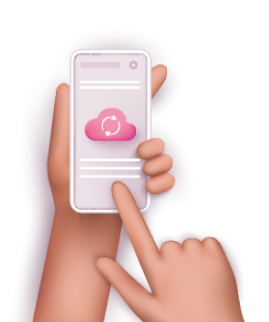

The 5 Most Commonly Used Customer Care Success Metrics… and Why They Don’t Matter
A customer care center can’t be a black box. Technical support staff and Customer Support Managers (CSMs) are tasked with a critical part of your business — customer satisfaction. They are firefighters on the front line, solving end-user challenges and performance issues, often in real-time.
The metrics you use to measure your agents’ performance should uncover the truth behind their efficiency and their success. But have you ever stopped to consider that the measurements you’re using aren’t the right ones to support your business growth?
1. Average Handling Time (AHT)
The average amount of time that a customer spends on a call is regularly used to measure agent efficiency. The industry standard for Telecommunications is 8 minutes and 48 seconds, in case you were wondering how you stack up against the competition. The general idea is that the lower the AHT, the more customers can be served. But it fails to answer one key question: Has the issue been resolved?
AHT doesn’t tell you anything about whether the issue was handled successfully, as it measures customer care teams by their speed, not their outcomes. As support is incentivized to hang up ASAP, they are more focused on getting to the next call than problem solving for the current one.
2. First Call Resolution (FCR)
What percentage of your calls are resolved after the first interaction? That’s what FCR aims to answer. The industry will tell you you’re doing well if your FCR rate falls between 70-79%. That means that under 30% of customers need to call again in order to get their questions answered or their issues resolved.
One of the problems with FCR is that it will remain high when customers are calling with “easy” problems — where there is a known quick fix. With the growing complexity of the connected home, Internet problems are becoming more difficult to diagnose and fix. Generic last mile and router checks are regularly insufficient. A subscriber not calling again doesn’t automatically mean the root cause of an issue has been resolved, and FCR doesn’t factor in call abandonment or issues that were too complex or multifaceted to allow that quick fix.
3. Customer Satisfaction Score (CSAT)
Agent performance can also be measured by looking externally at how happy the customers are with the support they received. That’s what CSAT aims to do, usually with post-call surveys, smile sheets, and other opt-in assessments of the agent’s performance. On average, the industry standard for a good CSAT score is 75-84% giving you that sky-high #5.
Now imagine that you personally just got off a frustrating call with a support rep, or hey — even an average one. You get an email in your inbox asking you to answer a short survey. How likely are you to fill it in? The problem with CSAT is that it relies on the customer volunteering their experience, and in general, only highly satisfied or extremely unsatisfied customers want to provide this. This gives you a skewed sample of your subscribers, which isn’t representative of your whole customer base at all.
4. Calls Handled
Simple enough to understand, this metric is about how many calls an agent can handle in a given period. It’s similar to AHT, as it looks to measure agent performance by speed and efficiency. From a business point of view, the more calls a single agent can handle, the less support reps the organization needs to hire, and the less expensive customer care becomes overall. With agents handling dozens of calls a day, and 74% of agents at risk of burnout, its also a great metric for working out your busiest service hours and flagging causes for concern.
We say, stop thinking about your contact center as a call taking machine. You’re not going to succeed or fail based on how many calls you can power through in a day. In the era of customer is King, you’re being judged on customer retention, satisfaction, and business growth. Calls handled doesn’t give you any greater insight about the context of those calls, and it certainly doesn’t tell you anything about the disgruntled subscribers sitting at home who never pick up the phone at all.
5. Abandonment Rate
An abandonment rate measures how many customers hang up before they ever speak to an agent, usually because they are sitting on hold or in a queue. When you see a high abandonment rate, the traditional thinking is that customers got frustrated waiting around, which may lead to a loss of trust in your company. Industry advice is that under 2% is a good rate, with anything under 5% seen as passing muster.
Unfortunately, abandonment rate doesn’t give you context about why the subscriber hung up the phone. They might have got bored of waiting, found the answer to their query online, or perhaps the issue resolved itself. In some cases, your own technical teams might have proactively fixed a known issue, and the customer is currently doing a happy dance in their living room while they get back to watching Love is Blind.
Time for Customer Care KPIs That Are Accurate and Contextual
We’re not saying that you should throw out traditional metrics with the bathwater, but today’s call centers do need to augment legacy metrics with an accurate, contextual representation of the user experience. Otherwise, CSPs are left filling in the blanks with guesswork instead.
Veego’s Quality of Experience (QoE) scores are built by accurately measuring network performance in the context of real-time and over-time user activities. We measure and monitor a wide variety of KPIs, non-intrusively on the device itself, as well as on the WiFi or CPE, during last-mile delivery, WAN, or on the cloud. We know each application’s ideal requirements for anything from streaming video, to web conferencing, eLearning, or gaming, and so the QoE score is an accurate reflection of every customers’ real-time experience — those who call, and those who don’t.
With access to a QoE score, call center reps can:
- Benchmark: View QoE before and after a support call, to go further than calls handled and FCR, to measure calls resolved successfully.
- Improve: Add significance to other call center metrics, and give perspective to questions like “why did this customer abandon their call?” and “has the issue really been resolved?”
- Delight: Stop worrying about being measured by speed, and focus on holistic customer experience and boosting retention through proactive support.
Want to learn more about how QoE adds context to the connected home? Check out our two-part series on internet problem mitigation.





